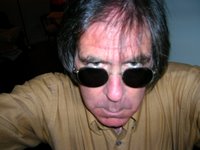April 9
 On the 9th in 1959, the American space agency NASA introduced Malcolm Scott Carpenter[i]. Leroy Gordon Cooper[ii], John H. Glenn Jr.[iii], Virgil I. "Gus" Grissom[iv], Walter M. "Wally" Schirra[v], Alan B. Shepard[vi], and Donald K. "Deke" Slayton[vii] to a waiting world. They were the first people selected to participate in the United States’ Mercury program and would be the first Americans to go into outer space, though not the first Americans to be spaced. Carpenter and Glenn are now the last survivors of this historic group.
On the 9th in 1959, the American space agency NASA introduced Malcolm Scott Carpenter[i]. Leroy Gordon Cooper[ii], John H. Glenn Jr.[iii], Virgil I. "Gus" Grissom[iv], Walter M. "Wally" Schirra[v], Alan B. Shepard[vi], and Donald K. "Deke" Slayton[vii] to a waiting world. They were the first people selected to participate in the United States’ Mercury program and would be the first Americans to go into outer space, though not the first Americans to be spaced. Carpenter and Glenn are now the last survivors of this historic group.[i] Carpenter was the second American to orbit the earth. Shame on you if you don’t know who the first was.
[ii] Cooper always insisted that he had seen extraterrestrial crafts (UFOs), the first encounter when he was flying over Germany in 1951. His Book Out of The Blue describes that incident and many other encounters, though he denied seeing any in his time with the Mercury Program. In a stunning bit of irony, Cooper died on October 4, 2004, the same day that SpaceShipOne made its second flight and won the Ansari X-prize.
[iii] In 1957, Glenn appeared on the television show Name That Tune and won $12,500.
[iv] After the successful Gemini 3 flight, Grissom said that he hoped “If we die, we want people to accept it. We are in a risky business and we hope that if anything happens to us it will not delay the program. The conquest of space is worth the risk of life.”
[v] Schirra is the only astronaut to have flown in the Mercury, Gemini and Apollo programs. He logged close to 300 hours in space.
[vi] Reflecting on his time with the Space program, Shepard reluctantly said that "I must admit, maybe I am a piece of history after all."
[vii] Despite having serious heart problems, Slayton received medical clearance and went back into space as the docking module pilot for the Apollo-Soyuz Project in July 1975.


0 Comments:
Post a Comment
<< Home